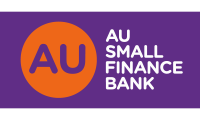Credit card debt, or any kind of debt, is a financial constraint that presents a psychological burden with itself.
It is essential to understand that failure to repay your credit card bills on time results in the banks asking you to pay the interest along with the accumulated debt, which increases the amount to be repaid by the interest rate and ultimately leaves you in a worse place. Staying indebted long enough results in a debt trap that eventually becomes hard to get out of by any kind of financial management.
Being in a debt trap significantly affects your credit score or the financial metric used by banks to access your credit quality. The credit score eventually affects all your personal finance decisions and decides your access to goods and services.

Most importantly being in debt leaves you in a worse physical and mental state by increasing your stress levels, affecting your sleep, depriving your immune systems, negatively impacting your relationships, and on and on. Basically, it doesn’t only leave you in a worse off situation financially but also in all other aspects of your life.
While credit card debt is scary and has many negative implications, it can be managed to serve your short-term and long-term goals. With this attempt, this article focuses on four simple steps to pay off credit card debt systematically.
But first, it is important to understand how you got here. A few of the habits associated with getting trapped in credit card debt include overspending or spending more than you can afford, only making the minimum payments in the hope of staying afloat, not paying attention to the terms and conditions of your credit card, and using credit cards as ATM cards or gift cards.
Keep in mind that any kind of effort will turn out to be futile if the habits underlying are not specifically targeted.
4 Steps to Pay Off Credit Card Debt:
Categorize:
Once a thorough list is prepared, you need to categorize the various credit card bills based on their factors. This step involves prioritizing by critically analyzing the urgency and the cost associated with the bills. The cost of the bill will be higher for bills with high-interest rates and the urgency of the bill will be higher for bills with upcoming obligations. It is a good idea to pay credit card bills with higher interest rates first since they end up compounding more.
Strategize:
The next step is to plan your repayment strategy systematically. This step requires you to go through all the viable options to pay off debt and then choose the set of plans which suit your needs the best and leave you in a better position. A few of the ways could be to:
-
- Go to the issuer: Most of the time, the best option is to reach out to the issuer of the debt who may allow you to repay the debt in regular installments. They might even provide you with a lower interest rate after carefully examining your credit profile
- Go to other sources: You could apply for a personal loan from various financial institutions or take a loan through informal channels. You should choose the alternative providing the lowest cost and preferably be less than the cost incurred on the bill you’re repaying. You can save on the difference between the costs and ultimately be better off
- Focus on early repayment: Debt lingering around without any asset generation leads to a deterioration of wealth over time. Therefore, it is important to repay debt fast and save on interest rate payments in the future as and when possible. It helps maintain a sound credit history if you pay more than the minimum amount due every month
- Snowball and avalanche approach: You may payout the debt based on the snowball approach by repaying the bills from the smallest to the largest or the avalanche approach, which repays the bill with the highest interest rate first. The snowball approach provides psychological comfort, whereas the avalanche approach proves to be cheaper
- Set instructions: The final and the most important step of strategizing is to set up a seamless repayment plan which particularly takes into consideration the prior mistakes. As part of the same, it is imperative to keep the funds in a dedicated account, not overspend, save more and set a binding set of instructions by putting on reminders or automating the repayment process.
Review and realize:
The final step is to review the repayment process and avoid the previous mistakes by correcting the habits that resulted in the debt creation. Once you have taken the necessary steps to repay the debt, revisit the prior blunders and avoid getting into the detrimental debt cycle.
List:
The first step towards paying off your credit card debt is to make a thorough list of all the bills associated with the card. Put in all the required details, including the amount, interest rate, repayment period, and other bills’ charges.
Bottom Line:
Once, you are out of credit card debt or have a firm and structured plan in place to get out of debt by a dedicated deadline, it is vital to align your spending habits with your financial goals.
Getting into debt can very quickly turn into a vicious habit. You need to understand the importance of your credit history in deciding your credit score, which is ultimately responsible for providing you with a stable credit line in the future, and staying in debt will definitely not help you with the same, particularly if you are young and have a whole life of financial ambitions ahead of you.
Contrary to the negative habits leading to debt, cultivating positive personal finance habits can help you use debt to your advantage, thereby positioning you in a wonderful financial life and a sound life experience.








